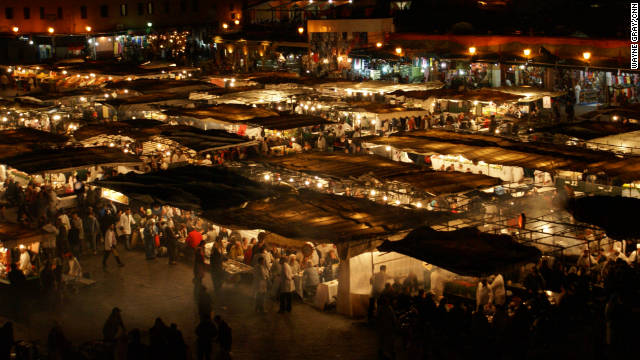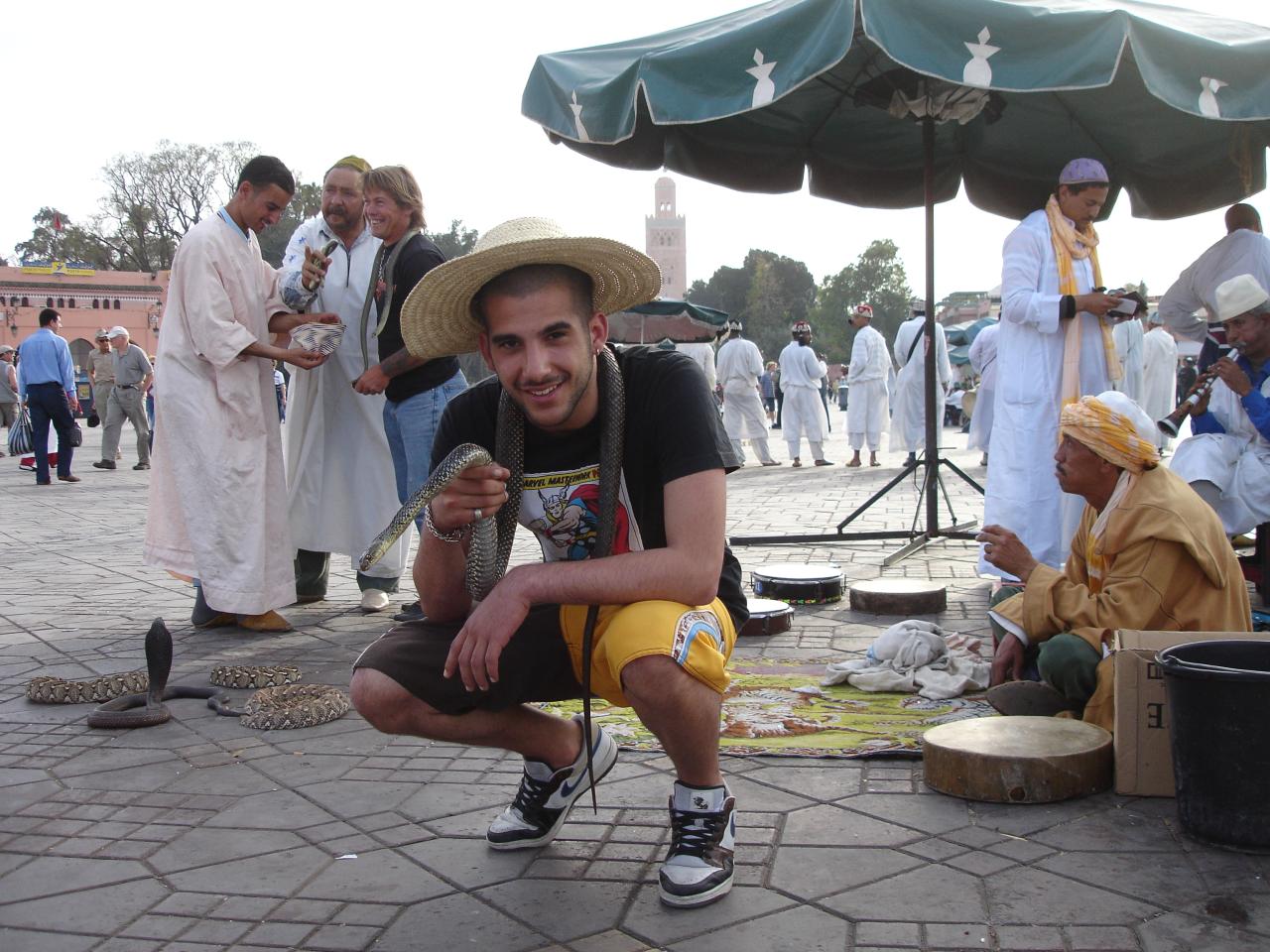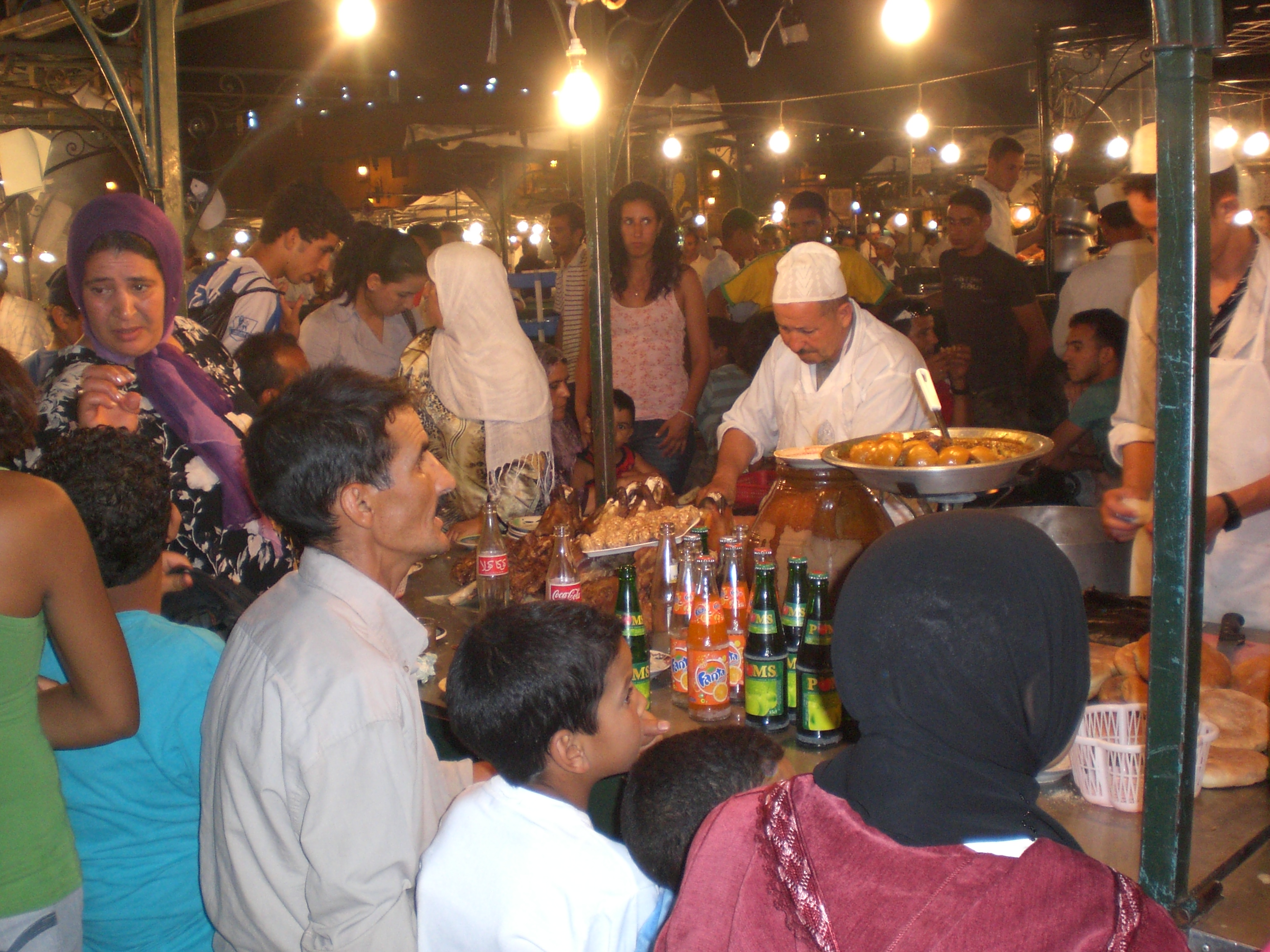Four days is rarely enough time to fully experience an entire country, and this certainly holds true for diverse Morocco. But four days is plenty of time to get an impression and appreciate cultural differences and similarities. I traveled to Morocco from Madrid, Spain, for a brief tour earlier this month, and the depth of cultural knowledge I gained far exceeded any preconceived expectations. While I found myself a bit outside my comfort zone at times, specifically in situations involving Turkish toilets, those feelings were exactly what pushed me to broaden my horizons and try to see the world from the perspectives of the various people I encountered.



My experience was unique in that I went with fourteen girlfriends and chose a tour that emphasized cultural immersion over sightseeing. We jumped right into the cultural exchange with our first stop after arriving by ferry into Tanger: coffee with three religious women who were studying for advanced English degrees. The most striking difference between us was, of course, physical: they each wore a colorful hijab and loose, conservative clothing, while the clothes we had deemed “modest” were decidedly less so.
The conversation first turned to the status of women in Moroccan society and the customs they adhere to regarding their relations with men. While all three were religious, they did have varying opinions on whether or not it was okay to date men before getting married. One woman had met her husband because he was a friend of her brother’s since childhood, another said she wanted to marry traditionally and not date her future husband prior to marriage, and the third seemed to indicate that it wasn’t a bad idea to spend some time with a man before committing herself to marry him, although her parents had had an arranged marriage and were still living together happily.
We made our way to Rabat later that day, and the people we met there confirmed the existence of traditional rules for dating, though their personal experiences were all very different. Uidet, a seventeen-year-old schoolgirl whose family opened their home to me and two friends for two nights, confessed in the broken English she had learned entirely from watching American television that she had a secret boyfriend of three years. While her mother did not appear to be very religiously observant—she did not put on a hijab when a male friend came to the house—she clearly maintained traditional views on marriage and dating.
Casablanca Old Moroccan House



The next day, we met up with male university students for a cultural tour of their hometown, which included some time in the market and a trip to a hookah bar. Judging by the fact that it was the same hookah bar multiple groups of friends were brought to the previous night by their host families’ teenagers, it appeared to be one of the few hangouts of its kind for young Moroccans. Of course, there was no alcohol either: a striking difference from the establishments most American college students frequent. The boys we met appeared very americanized, and as we relaxed on couches around the hookah, our conversation was much less foreign than the one with the religious girls had been. Even so, one of the boys told us that his sister had just gotten married to a second cousin in a relatively arranged marriage. She was thirty, which he surprisingly said was not an abnormally high age for marriage in Morocco, and had basically just decided it was time to be married and had the union arranged by her family. He said that he was planning on dating before marriage, however, and that many men find that their parents are relatively open to the idea of their sons finding girlfriends and it’s the girls who have to hide their relationships. This semi-covert world of dating and hookah smoking is vastly different from the largely explicit sexual and substance-related culture we are used to in the United States and especially Europe.
Yet, despite the vast cultural differences, and even stark disagreements, we found in our encounters with Moroccan youth, we managed to find common ground drinking sweet Moroccan tea, ambling through the outdoor markets, going to the hamam (bathhouse), getting henna tattoos, and digging into a huge pot of couscous, and everyone I met did their best to help me feel welcome and comfortable in their home country.
Moroccan Fresh Snails Jemma El Fna



Crossing back over the border from Morocco to the Spanish enclave of Ceuta, which has one of the largest income disparities of any border, really made me realize what a different world I had just visited. As drab, dingy shacks and menacing, barbed-wire-topped walls faded into seaside villas and spotless, colorful cafes in a matter of minutes on foot, reality hit me straight in the face. The Moroccan students we had met might never get the chance to use the European languages they were mastering in their respective European countries because it is nearly impossible for the average Moroccan to get even a tourist’s visa, let alone immigrate to Europe. The closest Uidet will probably get to the United States is watching American films in her living room. As I breezed through border security, I felt lucky to have been able to experience a new culture and learn from the Moroccan people, if only for a few days.
